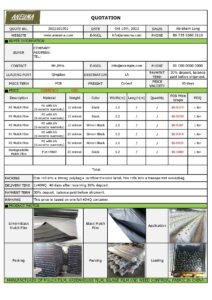Greenhouse farming has revolutionized modern agriculture, providing a controlled environment for optimal crop growth. At the heart of this innovation lies the greenhouse film – a crucial element that determines the success of plant cultivation. With a wide array of greenhouse films available, each tailored to specific needs and conditions, understanding the different types is essential for maximizing yields. In this comprehensive guide, we delve into the diverse world of greenhouse films, exploring their unique characteristics, applications, and benefits. Plus, we’ll highlight how Aneuma, a trusted industry name, offers exceptional products that elevate greenhouse farming to new heights.
Understanding the Role of Greenhouse Films
Before we delve into the types of greenhouse films, let’s outline their fundamental role. Greenhouse films serve as a protective barrier, creating a controlled microclimate within the greenhouse structure. They regulate factors like light transmission, temperature, and humidity, directly influencing plant growth and health.
Exploring Different Types of Greenhouse Films
1. Polyethylene (PE) Films
Polyethylene films are the most common and versatile type of greenhouse cover. They are available in various thicknesses and are cost-effective solutions for a wide range of crops. Polyethylene films offer good light diffusion and are suitable for both small-scale and commercial applications.
2. Ethylene Vinyl Acetate (EVA) Films
EVA films are known for their high light transmittance and excellent diffusion properties. They are particularly popular for crops that require even light distribution and reduced shadows. EVA films also provide good resistance to degradation from UV radiation.
3. Polyvinyl Chloride (PVC) Films
PVC films are valued for their durability and strength. They offer good insulation properties, making them suitable for colder climates. However, PVC films may not diffuse light as effectively as other materials, which should be considered when selecting them.
4. Polycarbonate Films
Polycarbonate films are renowned for their impact resistance and light diffusion. They are often used in more permanent greenhouse structures and provide excellent thermal insulation. These films are a preferred choice for crops that benefit from consistent light levels.
5. Acrylic Films
Acrylic films offer high light transmittance and exceptional clarity, making them an excellent choice for maximizing solar radiation. They are less commonly used in large-scale commercial operations but can be ideal for hobbyists or research applications.
Aneuma: Elevating Greenhouse Farming
Among the myriad greenhouse film options available, Aneuma stands out as a trusted provider of high-quality products. Aneuma offers a range of greenhouse films, each carefully designed to meet specific agricultural requirements. With an emphasis on innovation, quality, and sustainability, Aneuma’s greenhouse films are engineered to enhance crop yields, improve plant health, and contribute to eco-friendly farming practices.
Conclusion
As greenhouse farming continues to evolve, the choice of greenhouse film remains a critical factor in achieving successful crop cultivation. By understanding the characteristics and benefits of different types of greenhouse films, growers can make informed decisions that align with their specific needs and goals. With Aneuma’s commitment to excellence, the future of greenhouse farming is brighter than ever, promising increased efficiency, sustainability, and bountiful harvests.

